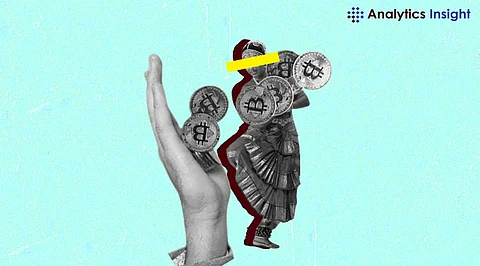

Cryptocurrencies, like Bitcoin, Ethereum, and Dogecoin, have arisen as a new type of decentralized, digital, and international currency. They provide advantages like as efficiency, inclusivity, and transparency for the future of finance. However, integrating cryptocurrency payments into regular banking institutions is a difficult process that entails regulatory, technological, and security issues. How can cryptocurrency and traditional finance live and work together in a hybrid financial system?
Cryptocurrencies are based on a peer-to-peer network that is not controlled by a central authority, such as a government or a bank. This presents a challenge for traditional financial institutions, such as banks, payment processors, and regulators, which are accustomed to following a system of regulations and standards that assure consumer protection, anti-money laundering, and tax compliance. Cryptocurrencies, on the other hand, are frequently viewed as a means of avoiding these rules and facilitating anonymous, cross-border, and criminal activities.
To solve this issue, some governments have taken a more welcoming and supporting attitude to cryptocurrency legislation, and others have taken a more restricted and antagonistic posture. Singapore, Switzerland, and Japan, for example, have clear and extensive legislative frameworks in place to recognize and regulate cryptocurrencies as a valid form of money. In contrast, China, India, and Turkey have prohibited or limited the use and sale of cryptocurrencies, claiming concerns about financial stability, monetary sovereignty, and national security.
Another problem is technical integration. Cryptocurrencies are based on a different technology than traditional financial systems, specifically blockchain. Blockchain is a distributed ledger that records and validates transactions without the need for middlemen. This makes cryptocurrency transactions quicker, cheaper, and more secure than traditional ones. However, it introduces compatibility concerns with older systems, which are frequently centralized, antiquated, and compartmentalized. For example, how can a bank account holder send and receive cryptocurrency payments from a crypto wallet holder? How does a merchant accept cryptocurrency payments from customers using a credit card? How can a regulator track and audit cryptocurrency transactions on a public blockchain?
To address this issue, certain platforms and technologies have evolved to bridge the divide and promote interoperability and innovation. Crypto exchanges, such as Coinbase, Binance, and Kraken, enable users to purchase, sell, and store cryptocurrencies with fiat currencies, bank transfers, and credit cards. Crypto payment processors, such as BitPay, CoinGate, and Crypto.com, enable retailers to accept cryptocurrency payments from clients and convert them to fiat currencies, as well as provide invoicing, reporting, and tax services. Crypto wallets like Metamask, Trust Wallet, and Ledger enable users to store, transmit, and receive cryptocurrency, as well as access decentralized apps (DApps) and smart contracts across numerous blockchain networks.
The third problem is security risk. Cryptocurrencies are frequently commended for their security, as they use encryption and consensus procedures to avoid fraud and manipulation. However, they are also prone to cyberattacks, hacking, and theft, as proven by multiple instances of crypto exchange hacks, wallet breaches, and phishing schemes. For example, in 2014, Mt. Gox, the world's largest cryptocurrency exchange, was hacked and lost 850,000 bitcoins, worth around $450 million at the time. Another large cryptocurrency exchange, Bitfinex, was hacked in 2016 and lost 120,000 bitcoins, which were valued at around US$72 million at the time. Coincheck, a Japanese cryptocurrency exchange, was hacked in 2018 and lost 523 million NEM tokens, which were valued at around US$530 million at the time.
To reduce this danger, crypto users and providers have implemented various safeguards and recommended practices. For example, crypto users should utilize trustworthy and regulated crypto platforms, activate two-factor authentication and encryption, securely store their private keys and recovery phrases, and keep significant sums of cryptocurrency in cold wallets (offline storage devices). Crypto providers must also adhere to certain standards and regulations, such as the Payment Card Industry Data Security Standard (PCI DSS), the General Data Protection Regulation (GDPR), and the Financial Action Task Force (FATF) recommendations, to ensure the security and privacy of their customers' data and funds.
To summarize, integrating cryptocurrency payments into existing financial institutions is a difficult but rewarding task that can lead to a more efficient and inclusive financial system in the future. However, it is also necessary to overcome legislative, technological, and security obstacles, which may be accomplished by taking a balanced and collaborative approach with all stakeholders, including governments, regulators, financial institutions, crypto platforms, and consumers. Crypto payments do not pose a danger to traditional finance, but rather a chance to improve and reinvent it.
Join our WhatsApp Channel to get the latest news, exclusives and videos on WhatsApp
_____________
Disclaimer: Analytics Insight does not provide financial advice or guidance. Also note that the cryptocurrencies mentioned/listed on the website could potentially be scams, i.e. designed to induce you to invest financial resources that may be lost forever and not be recoverable once investments are made. You are responsible for conducting your own research (DYOR) before making any investments. Read more here.
